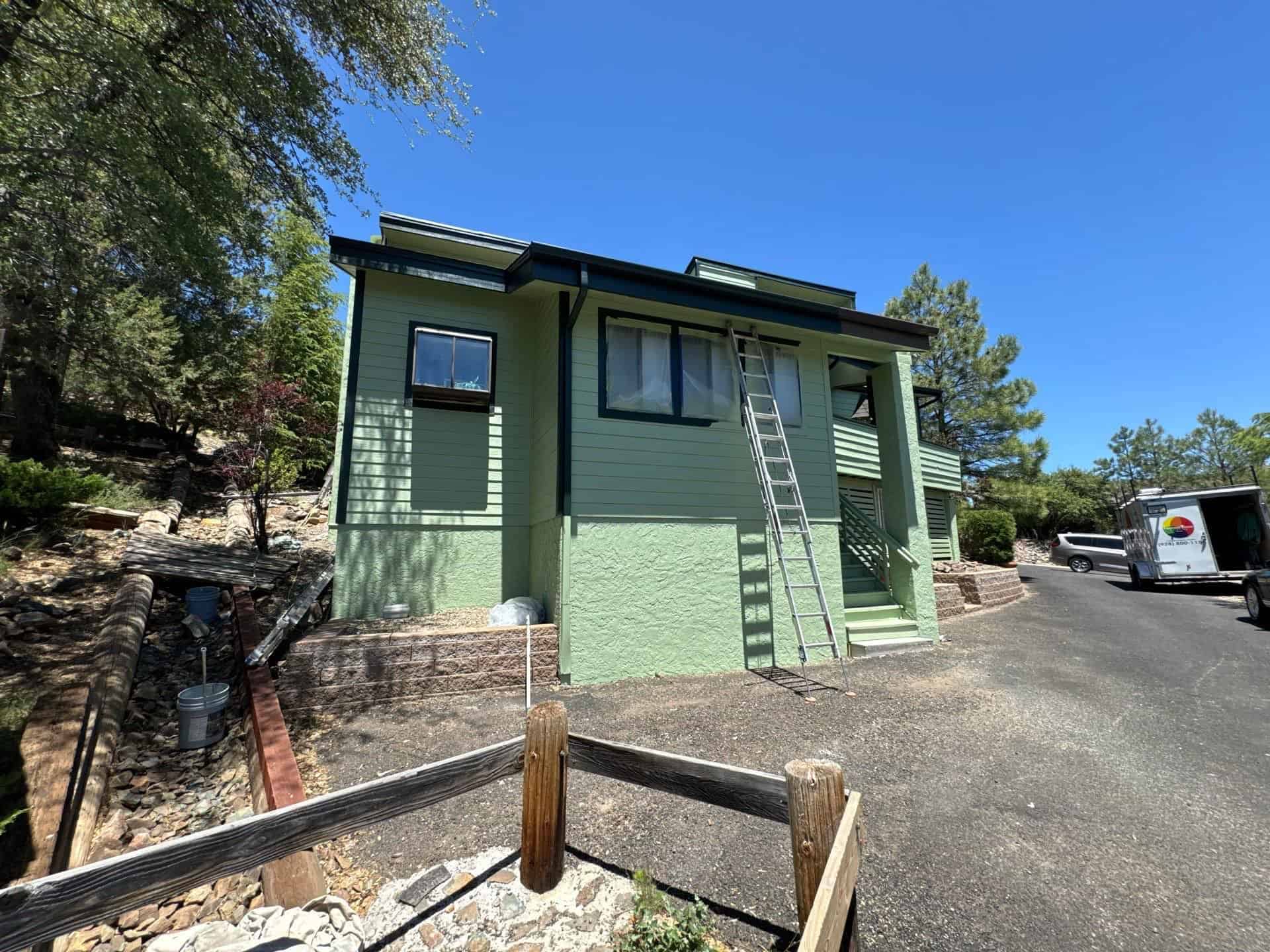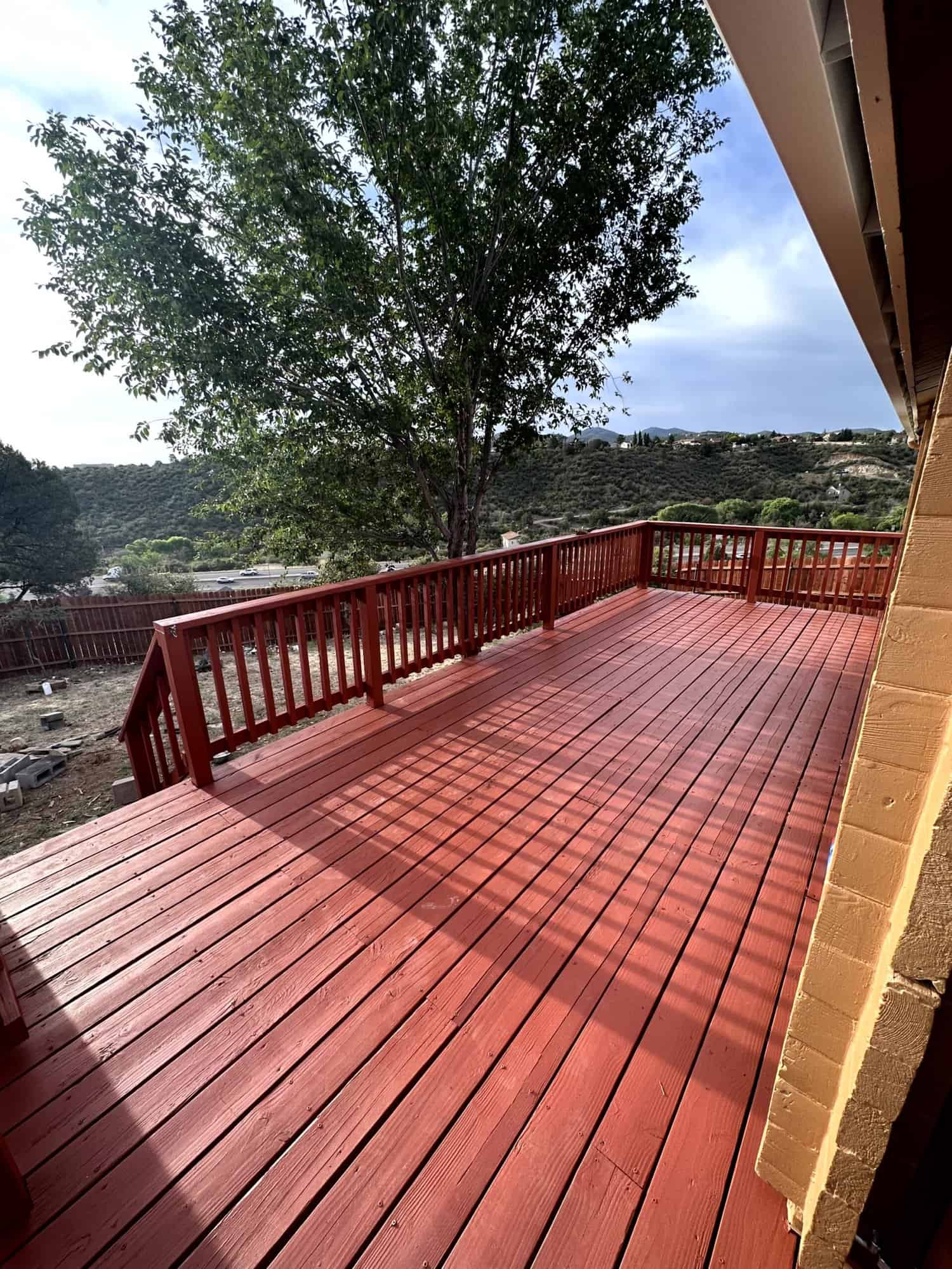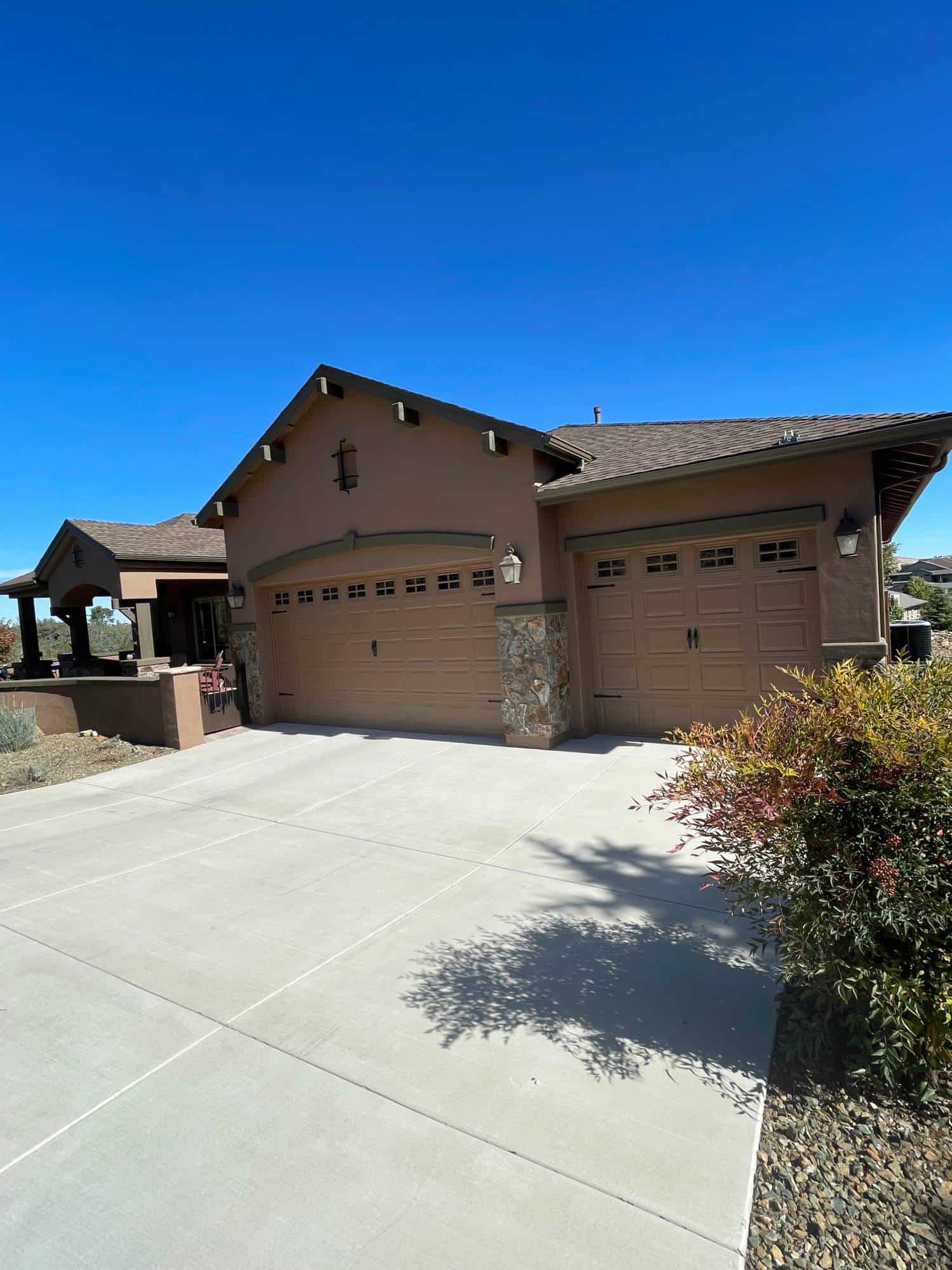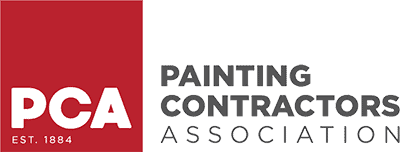A new coat of paint does more than refresh your home’s look — it protects against sun, wind, moisture, and aging. In a place like Prescott, AZ, where cool nights and strong daytime sun are normal, getting the timing right is essential.
Unfortunately, many DIY painters overlook one major factor: temperature.
Painting outside the right temperature range can lead to peeling, cracking, bubbling, and a much shorter lifespan for your paint job.
This guide explains the science behind exterior painting temperatures, the unique challenges Prescott homeowners face, and how to set yourself up for a perfect, professional-quality finish.
Why Temperature Makes or Breaks a Paint Job
Paint doesn’t just “dry.” It cures — a chemical process that bonds the paint to your home’s exterior.
If temperatures are too high, too low, or swing wildly between day and night, the curing process can fail.
When curing fails, you often see:
-
Peeling and flaking within a year
-
Cracks forming early
-
Bubbling or blistering surfaces
-
Fading colors faster than expected
In a city like Prescott, where spring and fall can bring big day-to-night shifts, this matters more than you might think.
Bottom line: Good curing depends on steady, appropriate temperatures — not just warm afternoons.
Best Temperature Ranges for Different Paints
Here’s a simple table you can reference when planning your project:
| Type of Paint | Ideal Temperature Range | What Can Go Wrong Outside This Range |
|---|---|---|
| Latex (Water-Based) | 50°F to 85°F | – Poor adhesion, leading to peeling and flaking. – Patchy, uneven finish as paint struggles to level. – Longer drying times if too cold; flash drying if too hot. |
| Oil-Based | 40°F to 90°F | – Paint thickens in cold weather, making it harder to spread smoothly. – Bubbling if applied in hot conditions due to surface overheating. – Cracking as temperature extremes stress the paint film. |
| Low-VOC Exterior Paints | 50°F to 90°F | – Tends to dry faster than traditional paints; unstable temperatures can cause uneven curing. – If too hot, rapid drying may lead to lap marks and rough textures. – If too cold, adhesion problems and soft, gummy surfaces may occur. |
Important:
Nighttime lows matter just as much as daytime highs.
In Prescott, it’s common for temperatures to drop 20°F or more after sunset — which can ruin curing if you paint too late in the day.
What Happens If You Paint Outside the Right Temperature?
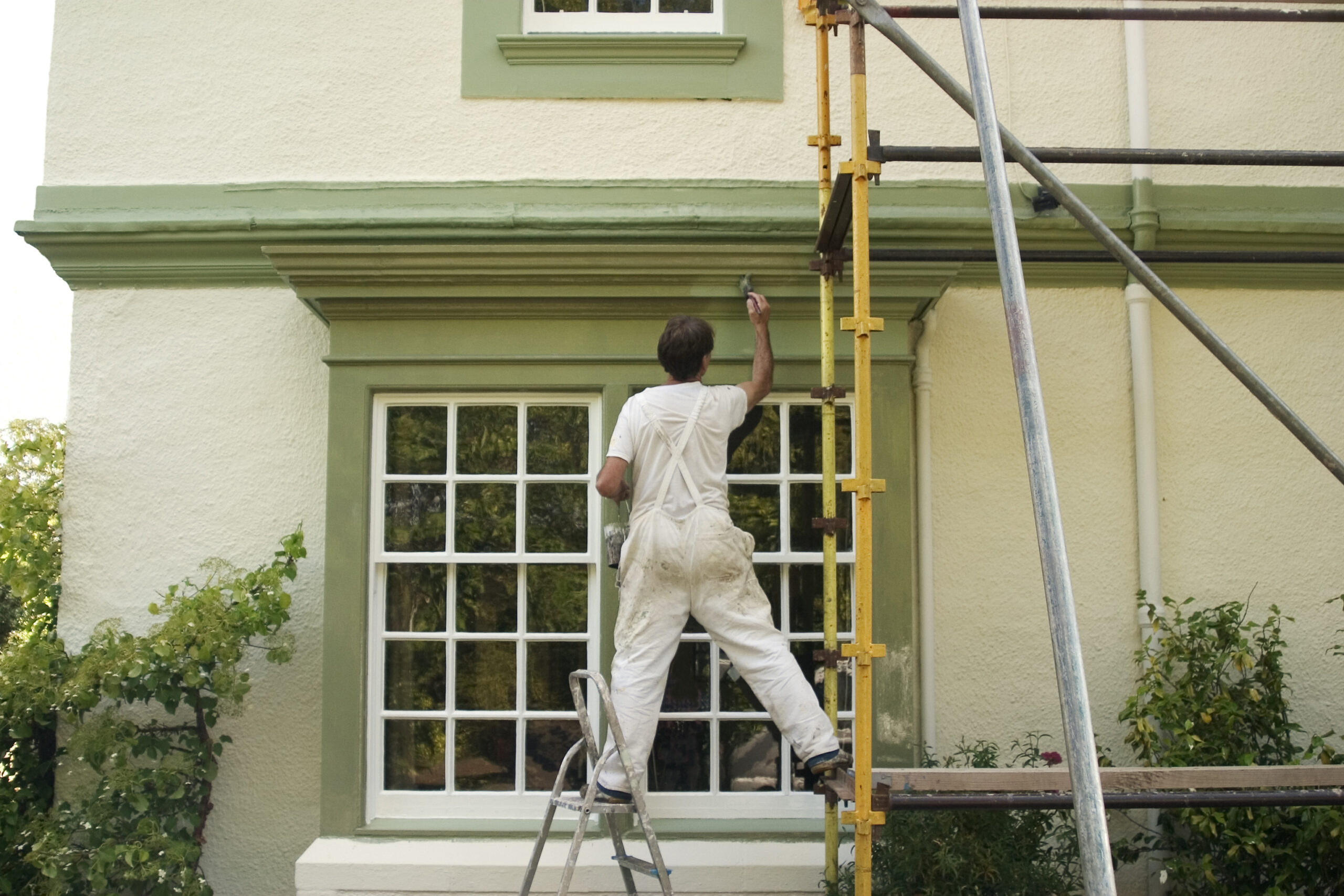
Painting in the wrong weather doesn’t just create minor imperfections — it can completely ruin the job.
Too Cold: Hidden Risks for Fresh Paint
When temperatures drop too low, paint thickens. It won’t spread smoothly, making it harder to achieve an even coat. Even worse, surfaces may still be holding hidden moisture from cold nights or recent rain. This invisible dampness blocks adhesion and can cause the new paint to peel or bubble within months.
Cold weather also dramatically slows drying time. Longer drying leaves your project exposed to dust, dirt, and even small insects getting trapped in the wet paint. In Prescott, where morning temperatures in early spring or late fall can dip sharply, this is an important risk to watch.
Too Hot: Flash Drying and Surface Damage
Heat creates a different set of headaches. If it’s too hot, paint dries too fast on the surface before it has time to level out properly. This leads to visible lap marks, streaks, and uneven textures that no topcoat can hide.
There’s a bigger issue too: the top layer may dry while lower layers remain soft. Over time, this mismatch causes peeling, cracking, and reduced durability. Low-VOC paints, popular for their eco-friendly properties, are even more sensitive to quick drying. In Prescott’s strong sun, especially on dark-colored siding, low-VOC paints can flash-dry almost instantly if you’re not careful.
Short version: rushing painting jobs during a midday heat spike is asking for trouble.
Prescott-Specific Environmental Challenges
Prescott’s high-desert climate adds a few more hurdles that painters must respect.
Low humidity is often seen as helpful because it speeds up drying — and it is. But when combined with windy conditions, it stirs up dust and debris, which can easily stick to tacky paint and permanently ruin the finish. High winds also make spraying techniques nearly impossible and can cool wet surfaces unevenly.
Intense UV radiation is another concern. Direct sunlight, especially on south-facing walls, can overheat surfaces well beyond the air temperature. This can cause paint to “bake” too fast, hardening the film before it fully cures and weakening its protective qualities.
Step-by-Step: How to Time Your Exterior Painting Perfectly in Prescott
Step 1: Check the 7-Day Forecast
-
Look for a full week of stable weather.
-
Avoid periods where nighttime lows dip below 45°F.
Step 2: Choose the Right Time of Year
-
Best seasons:
-
Late spring (May to early June)
-
Early fall (late September through October)
-
-
Avoid peak summer unless painting early mornings only.
Step 3: Paint at the Right Time of Day
-
Start late morning after any dew has dried.
-
Finish by mid-afternoon before temperatures drop.
-
Avoid painting in direct midday sun, especially on metal, stone, or stucco.
Step 4: Test Surface Temperatures
-
Touch siding with your hand.
If it feels cold or overly hot, wait — the surface temp matters more than the air temp.
Step 5: Select the Right Paint
-
Use high-quality, low-VOC exterior paints from trusted brands like Benjamin Moore and Sherwin-Williams.
-
Choose formulas made for wider temperature ranges if you’re painting early or late in the season.
Professional Tips for Perfect Prescott Painting
Professionals succeed in tough climates like Prescott because they plan smarter.
Here’s what they do differently:
-
Monitor microclimates: Temperatures near Granite Mountain, for example, stay cooler longer.
-
Pressure wash and dry surfaces early: This helps remove desert dust, pollen, and mildew without rushing prep.
-
Use cold-weather paints when needed: Some premium paints can cure at temps as low as 35°F, but they still need careful timing.
-
Adjust daily schedules:
Painting mid-morning to early afternoon prevents flash-drying or overnight moisture problems.
Common Professional Tools:
-
Infrared thermometers to check surface temps
-
Industrial sprayers for even application
-
Weather apps tuned to specific neighborhoods, not just city averages
DIY Checklist: Is It Safe to Paint Today?
Before you open that first can of paint, double-check:
- Daytime highs between 50°F and 85°F (latex) or 40°F and 90°F (oil-based)
- Nighttime lows no more than 10-15 degrees cooler
- Relative humidity between 40%-70%
- Surfaces completely dry after rain, dew, or washing
- No forecasted rain within 24–48 hours of painting
If you can check every box — you’re good to go!
Conclusion: Painting Smart in Prescott Pays Off
In a beautiful, high-desert city like Prescott, the weather can be your best friend or your worst enemy when it comes to exterior painting.
Timing your project carefully around temperature swings, surface conditions, and weather forecasts is the key to success.
Whether you’re using a premium low-VOC paint or a durable oil-based formula, the science behind when to paint makes all the difference.
DIYers can achieve great results, but if you’re not 100% confident — or you just want the job done right the first time — it’s smart to call in a professional.
Don’t risk a peeling, fading finish. Contact Finishing Touch Painting today for a free consultation and discover how we deliver lasting beauty and protection for Prescott homes — perfectly timed with the season.

